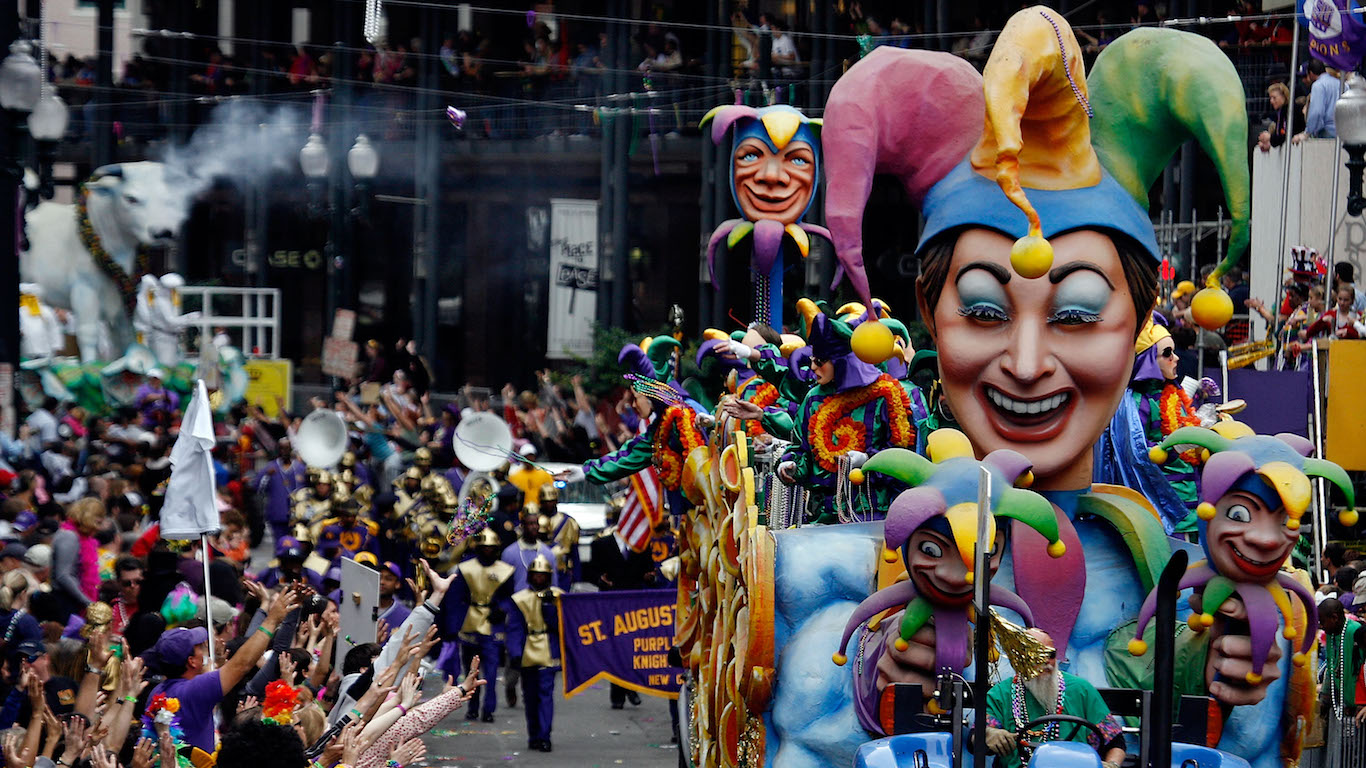From Uruguayans holding 40-day-long celebrations to Oktoberfesters consuming 7 million liters of beer in Munich, the people of the world have proven that they know how to party.
The term “carnival” often refers to the Catholic celebration of decadence and revelry held before the arrival of Lent, when people fast and abstain from such excess.
To choose the best carnivals in the world, 24/7 Wall St. compiled a list of the world’s cultural celebrations with the most attendants, eliminating niche conventions and music festivals. We focused on events that draw tourists to a place and feature a variety of culturally specific performances, such as music, parades, theatrics, and dance. We also made sure to represent a variety of countries, only selecting the largest carnivals out of dozens in Spain and Italy.
While many of the carnivals on our list stem from this pre-Lent tradition, they have also through the years incorporated strong elements of place and cultural traditions unrelated to religion, and have become vital icons of the countries that host them. Others are completely unique festivals in honor of fortune, loved ones past, the Buddha, and even beer.
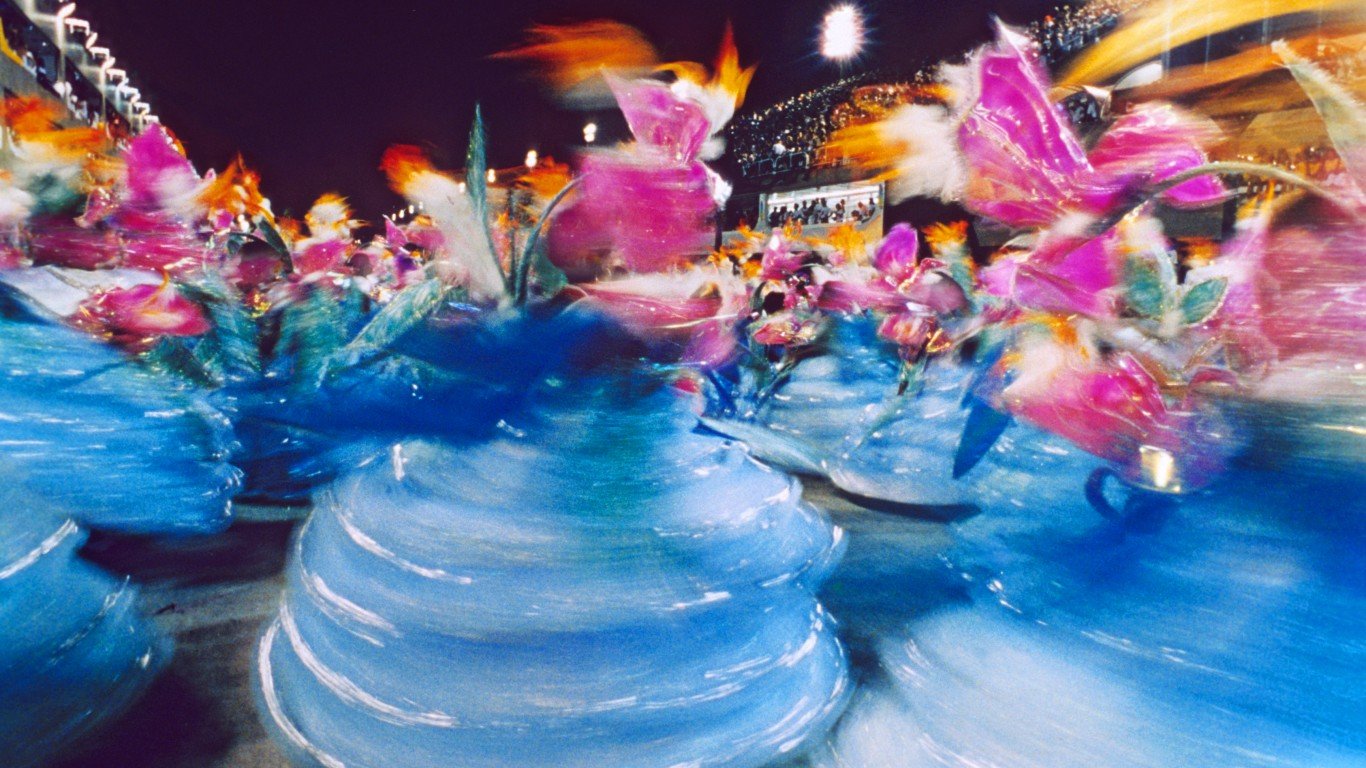
1. Rio de Janeiro Carnival
> Location: Brazil
> Dates: March 1 – March 9, 2019
Spanning the five days before Lent and hosting over 2 million tourists, Rio de Janeiro’s carnival is known as the biggest party in the world. It features hundreds of street parties, or “blocos,” many of which have their own Samba band. The carnival’s highlight is the spectacular Samba parade, a competition of social clubs called Samba Schools that represent various neighborhoods. Each club tells a unique story through an hour-long performance composed of costumed singers, dancers, and multiple floats.
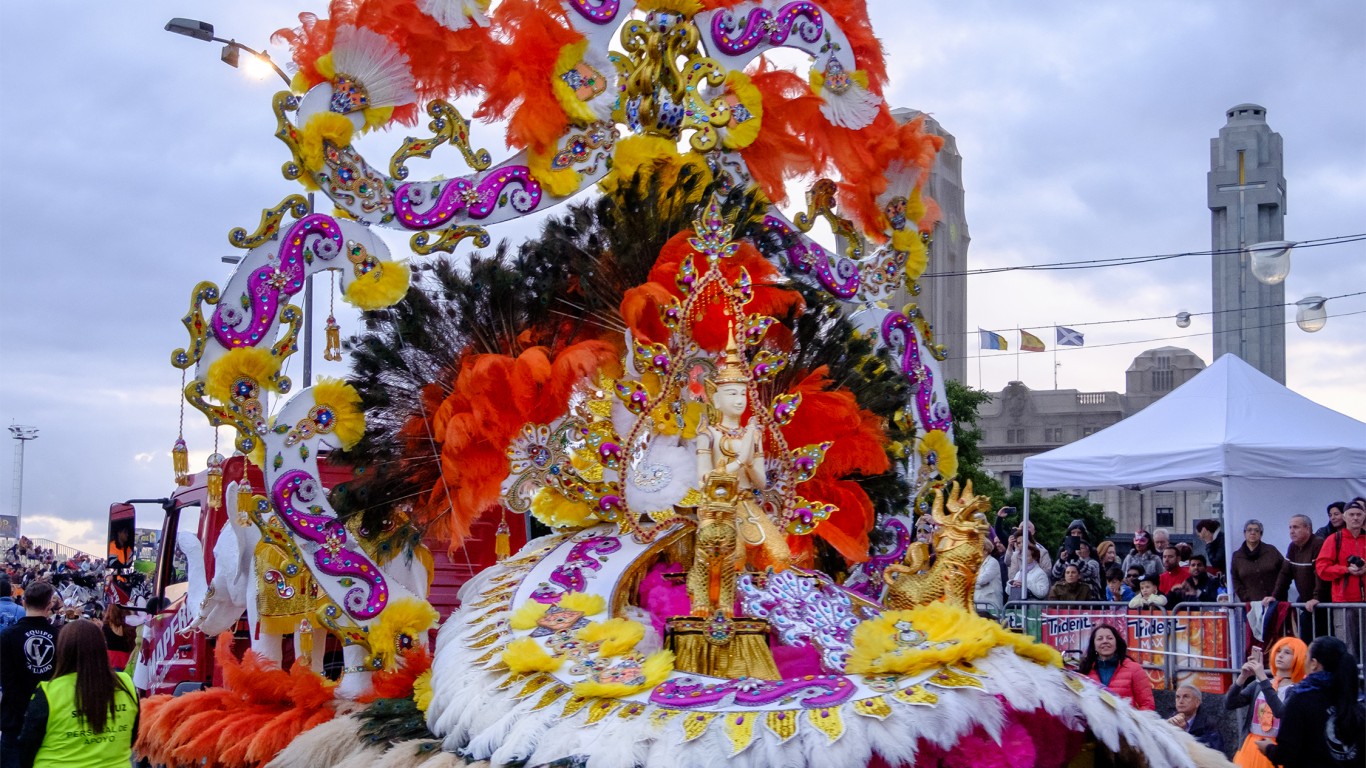
2. Carnival of Santa Cruz de Tenerife
> Location: Spain
> Dates: February 27 – March 10, 2019
Tenerife, the largest of Spain’s Canary Islands, hosts the Carnival of Santa Cruz. Each year over 200,000 people attend this pre-Lent celebration, which features the yearly election of a wildly costumed Carnival Queen, elaborately masked partiers, and a grand parade. The finale, the Burial of the Sardine, features a 30-foot papier-mâché fish being mourned by widows, and represents the end of excess and the beginning of fasting for Lent.
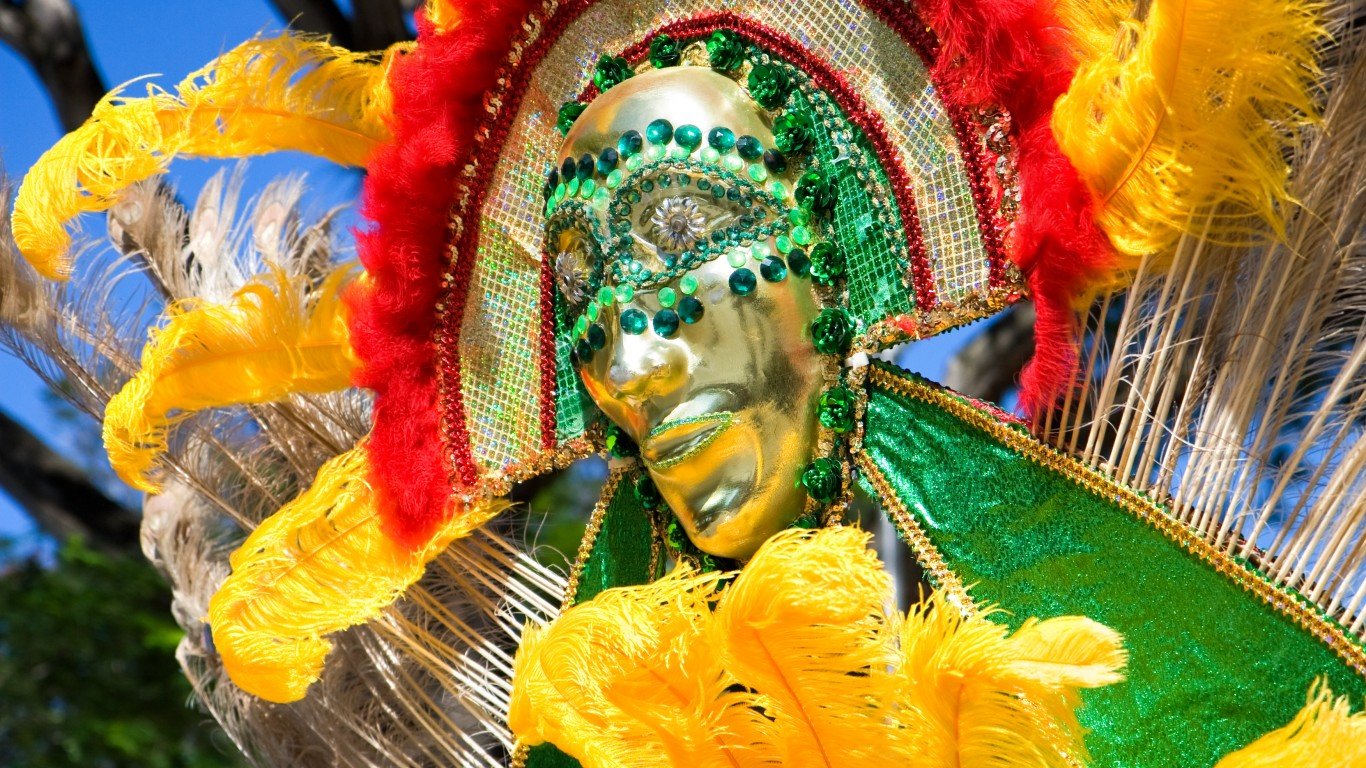
3. Trinidad and Tobago Carnival
> Location: Trinidad
> Dates: March 4 – 5, 2019
Known as the biggest carnival in the Caribbean, the Trinidad and Tobago Carnival hosts around 800,000 people. Attendants can walk along a six mile parade route and watch a steel drum band competition or a Carnival King and Queen competition. The highlight of this party is J’ouvert, french for daybreak, when at 2 AM parade-goers cover themselves in colorful paint and dance in the streets until well into the next day. Carnival costumes are often so large and elaborate that they need scaffolding and wheels to support them.
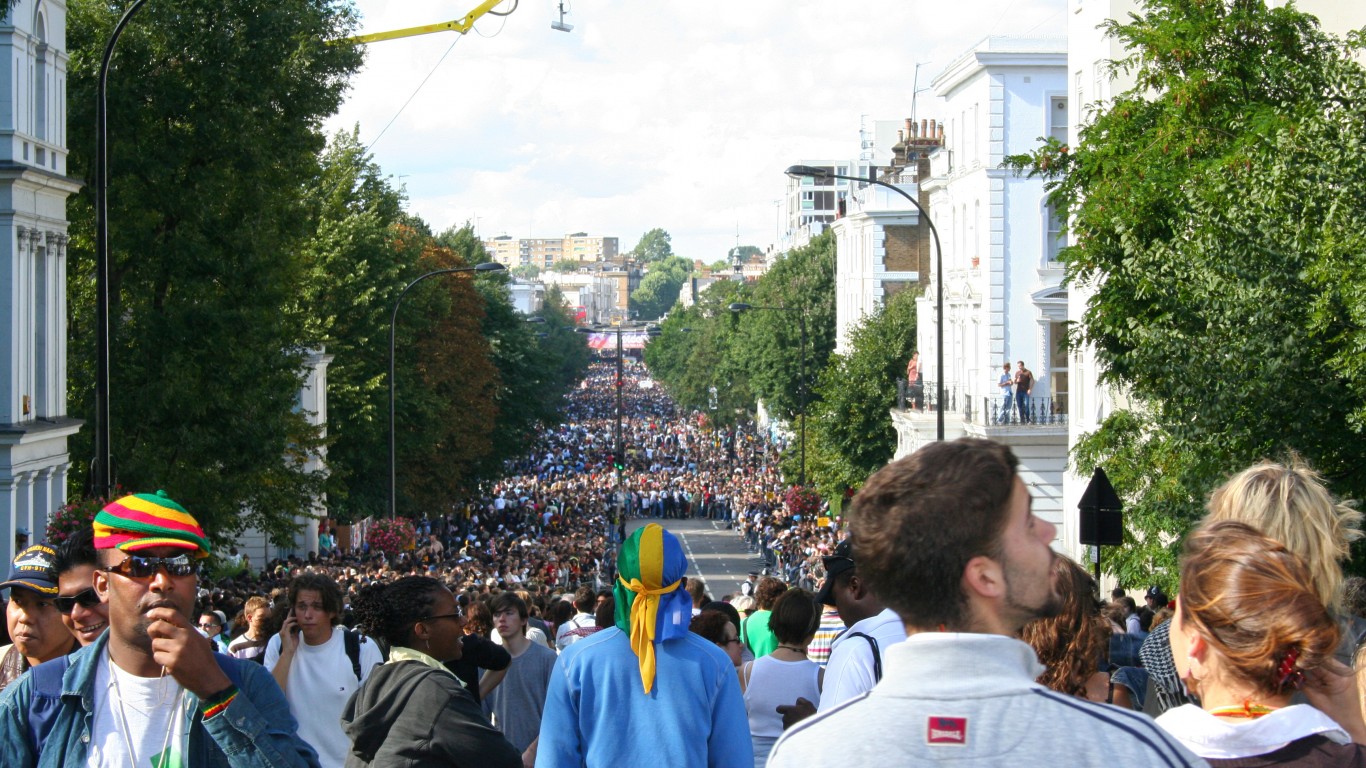
4. Notting Hill Carnival
> Location: London
> Dates: August 24 – 26, 2019
Stemming from the Trinidadian tradition, Notting Hill Carnival in London is the second largest carnival in the world and the largest street festival in Europe, with 2 million attendees. This party features 70 performance stages, 10 steel bands, and a costume troupe masquerade. The troupes, called mas bands, can contain between 80 and 300 people who spend all year preparing and who often hire Trinidadian designers to create their costumes.
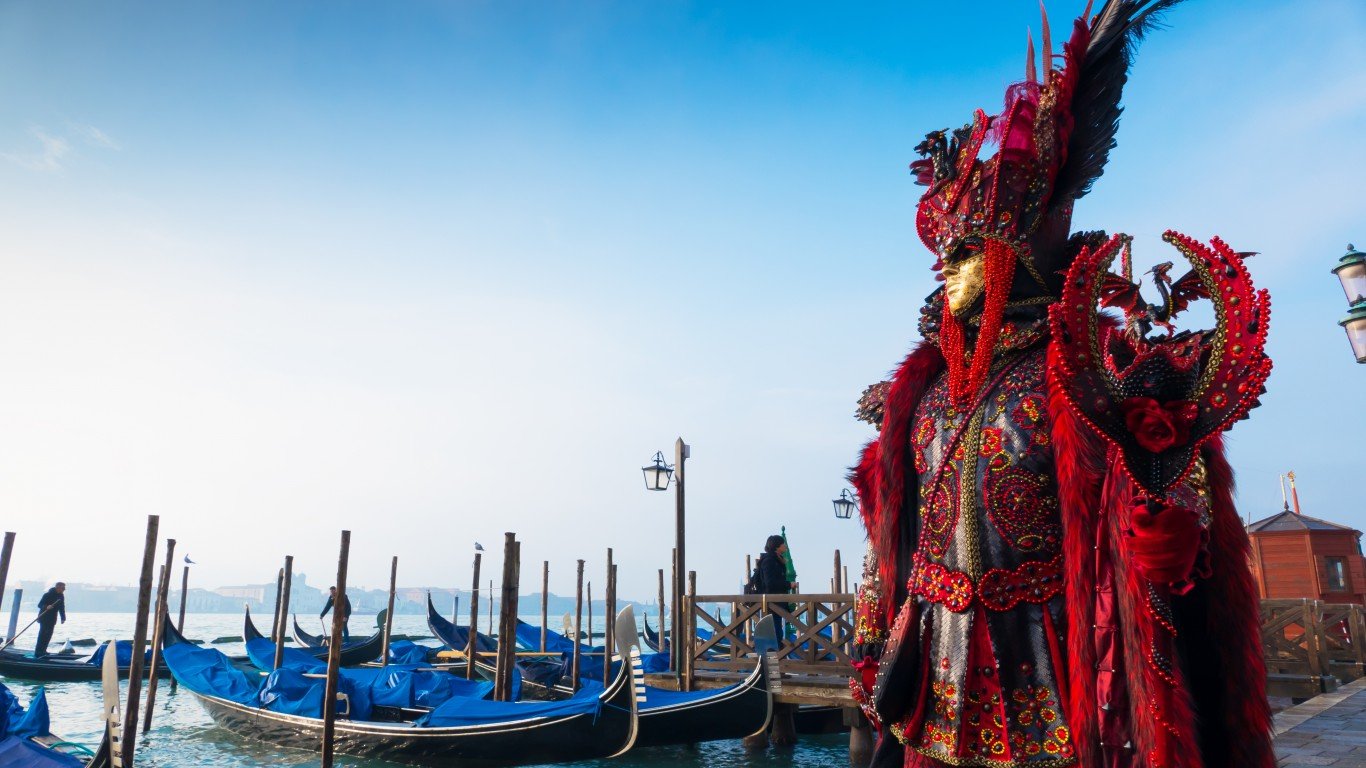
5. Venice Carnival
> Location: Italy
> Dates: February 16 – March 5, 2019
Carnival season in Venice runs for two weeks before Ash Wednesday and sees millions of visitors. It kicks off with a boat parade and light show on the Rio di Cannaregio canal. The next big event is a beauty pageant whose champion wins a zipline ride into the center of festivities, St. Mark’s Square, in what is known as the Flight of the Angel. In Venetian tradition, attendees wear masks and can attend many masquerade balls, some with expensive entry fees and strict dress codes requiring period costumes.
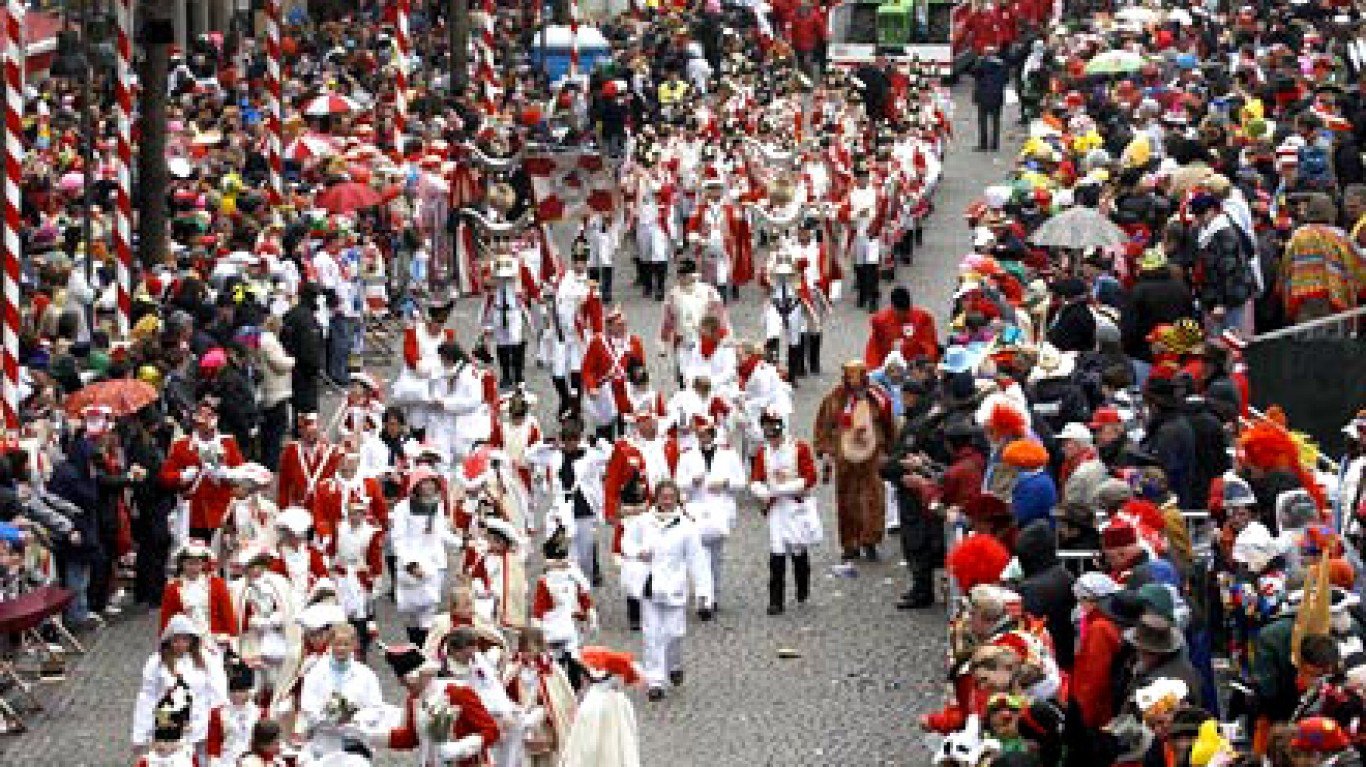
6. Cologne Carnival
> Location: Germany
> Dates: February 28 – March 5, 2019
Cologne Carnival in Germany is the culmination of what Germans call the fifth season, a carnival season that runs between November 11 and Lent. Each year, millions of people attend the Cologne Carnival festivities that span the week before Lent. The Carnival is led by an elected trio that embodies the carnival spirit, called Dreigestirn, dressed up as a prince, a peasant, and a maiden. A highlight of the festival is the Rose Monday parade, where 10,000 costumed paraders along with floats and blaring music march through the city center.
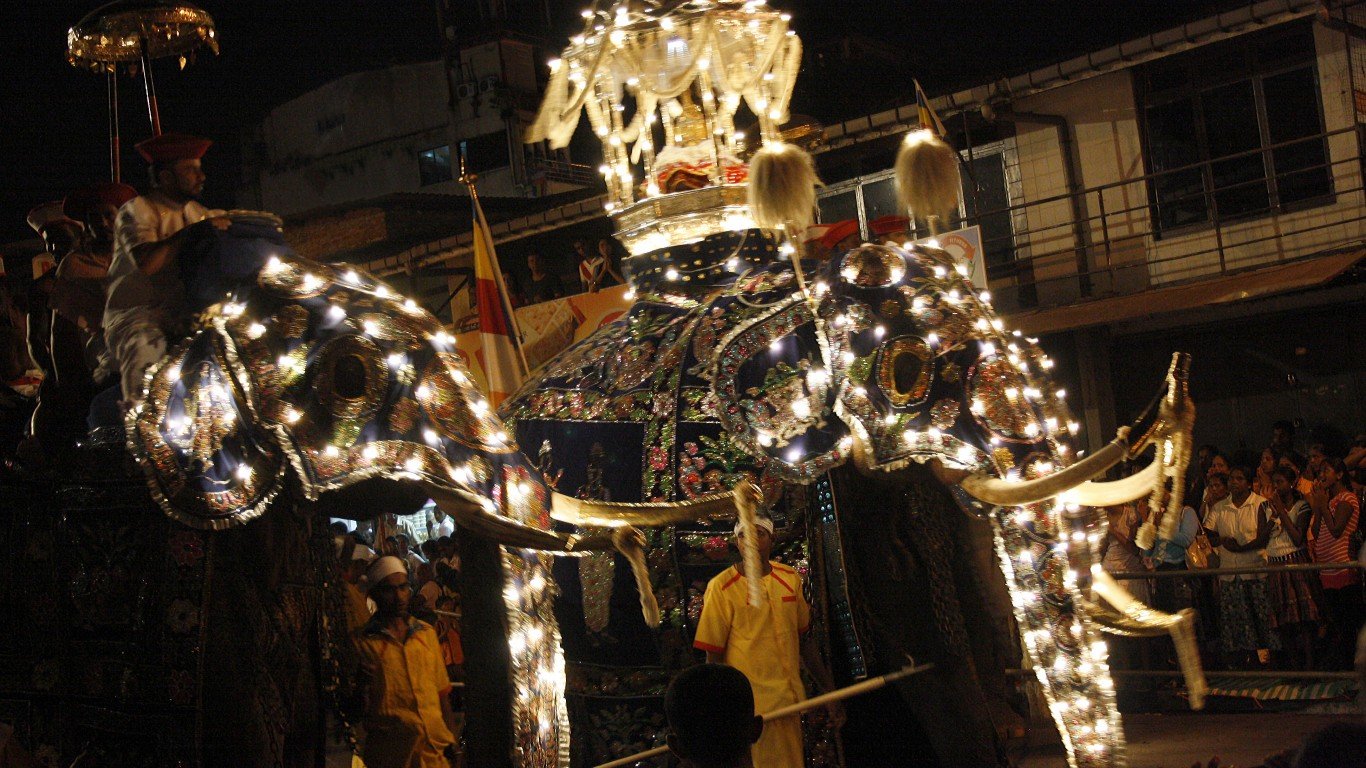
7. Kandy Esala Perahera
> Location: Sri Lanka
> Dates: August 5 – August 15, 2019
This ten-day festival, also known as the Festival of the Sacred Tooth, features whip dancers, jugglers, fire-breathers, musicians, and costumed elephants. Over 100 elephants march through the streets in a procession carrying what is thought to be a tooth of the Buddha. Though honoring Buddhist traditions, the festival also incorporates aspects of Hinduism and celebrates the old gods of Ceylon.
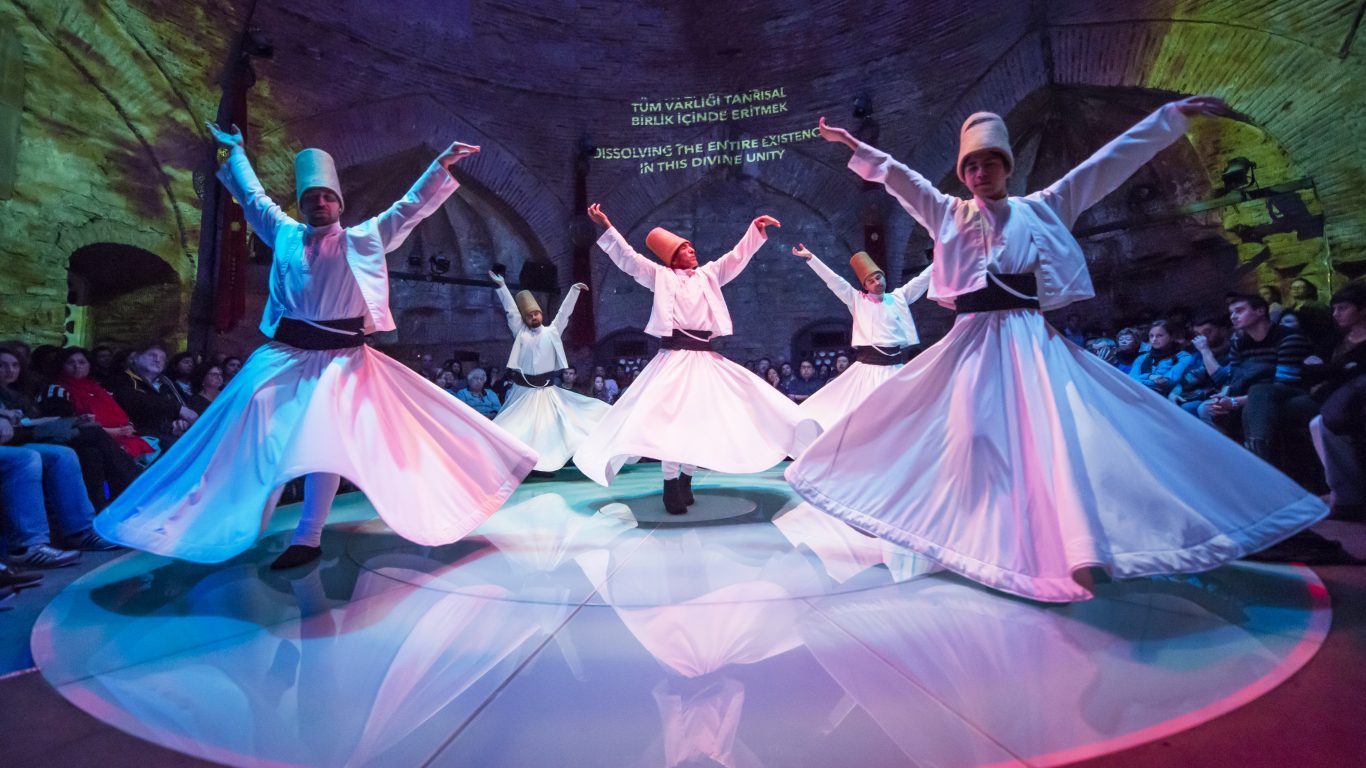
8. Mevlana Festival
> Location: Turkey
> Dates: December 7, 2019
The Mevlana or Whirling Dervish Festival is a week-long event held in Konya, Turkey. It is a celebration of the Sufi saint Mevlana Jelaluddin Rumi, and commemorates his union with Allah. One of Rumi’s teachings was an ecstatic form of dance performed as a connection to Allah. At this festival, thousands of Sufi pilgrims and tourists come to watch this dance performed in a ceremony called Sema, where dancers swirl around in large flowing skirts.
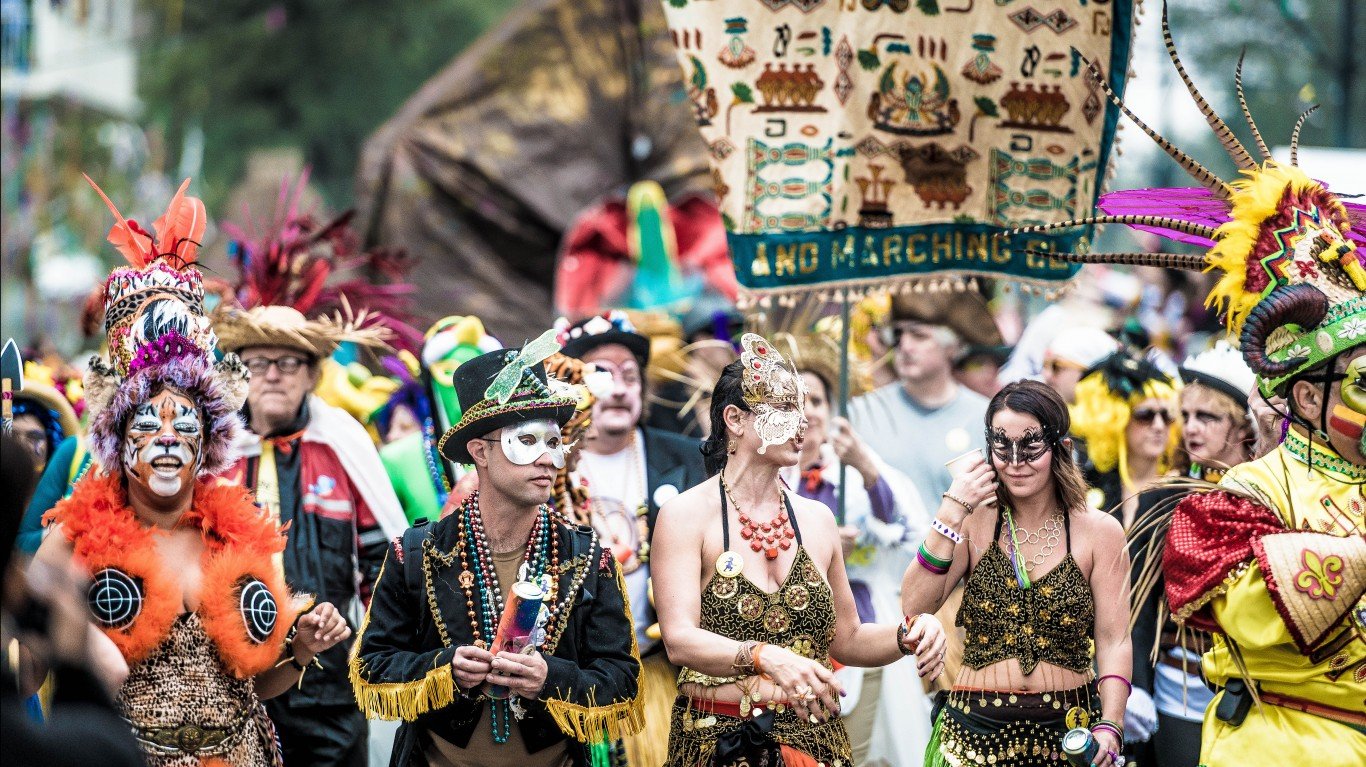
9. Mardi Gras
> Location: New Orleans, USA
> Dates: March 5, 2019
For over 160 years, New Orleans has been home to Mardi Gras. Carnival festivities start in early January and culminate on Mardi Gras, French for Fat Tuesday, which is the last day before Lent. Over 1 million people attend this celebration every year. Mardi Gras features balls, masquerade parties, and parades with floats, marching bands, and costumed dancers who throw beads and coins into the crowd. Hundreds of social clubs, called krewes, spend weeks building their floats and preparing for the big parade.
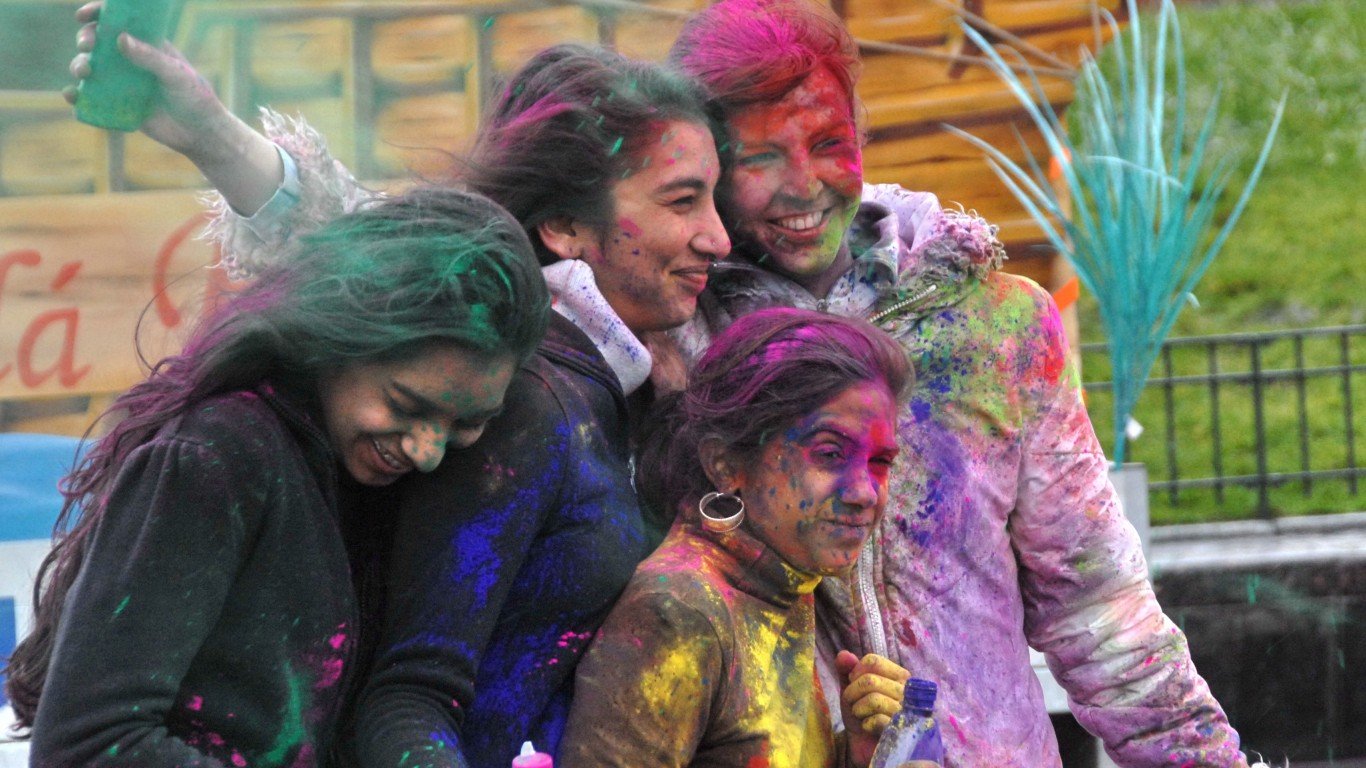
10. Holi Festival
> Location: India, Nepal
> Dates: March 20 – 21, 2019
Holi, the Festival of Colors, is celebrated all over the world with large contingents in India and Nepal. Originally a Hindu festival celebrating the triumph of good over evil, it is now celebrated by people of various religions and cultures in South Asia. The night before the festival, a large bonfire is built and people gather and eat together. The main event, known as Rangwali Holi, involves people throwing handfuls of colorful powder at one another.

11. King’s Day
> Location: Holland
> Dates: April 27, 2019
King’s Day is a national holiday celebrated throughout Holland. Each year, close to 1 million people squeeze into the streets of Amsterdam for the largest King’s Day festival. While starting out as Princess’s Day in honor of the birth of Queen Wilhelmina in 1885, it was later renamed Queens Day for former monarch Queen Beatrix, and has been King’s Day since the 2013 crowning of King Willem-Alexander. This party begins the night before, on King’s Night, at local bars that host a variety of concerts and events. The next day brings an epic spread of flea market stalls, heavy beer drinking, and the profuse wearing of orange, Holland’s national color.
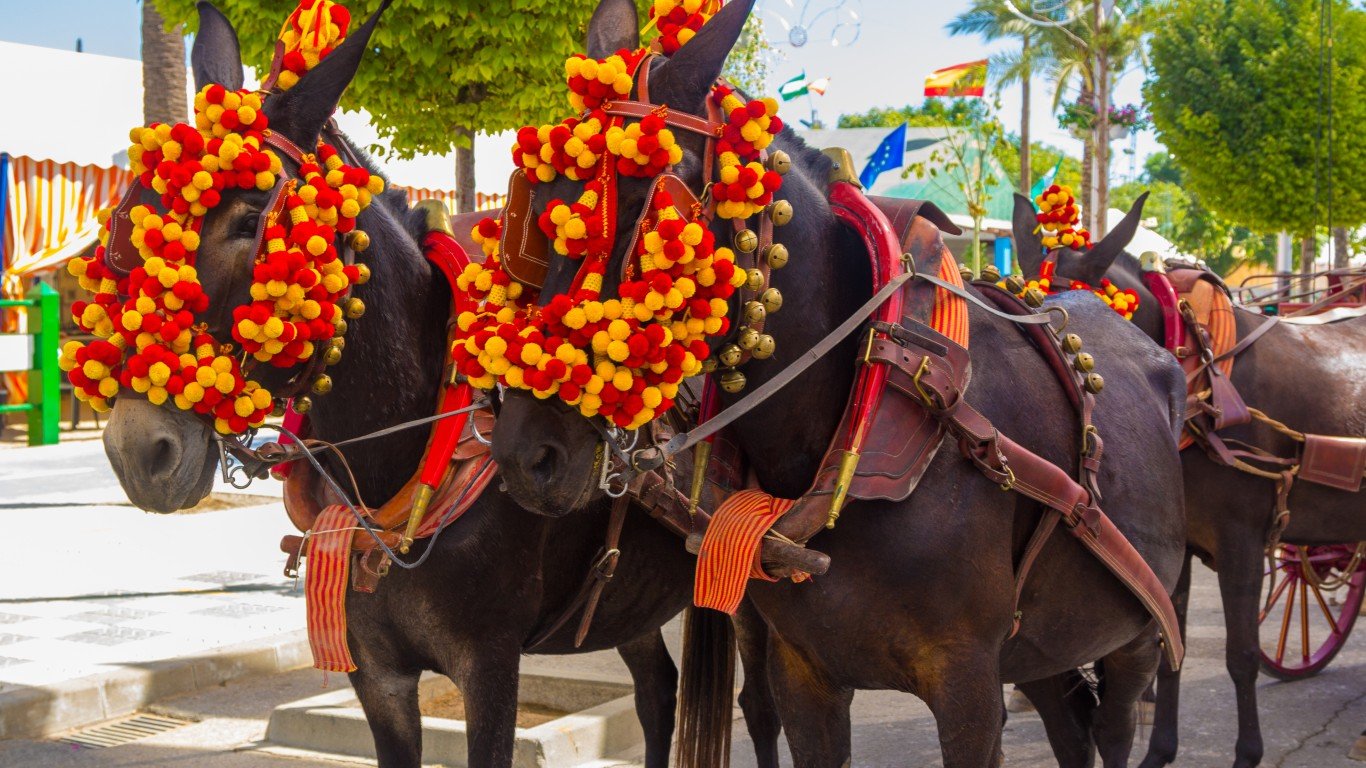
12. Cadiz Carnival
> Location: Spain
> Dates: February 28 – March 10, 2019
Cadiz Carnival, the oldest carnival celebration on mainland Spain, dates back to the 16th century, when Venice was a trading partner and strong cultural influence. What sets this carnival apart is the focus on humor and satire through music. Singing groups called chirigotas perform satirical pieces, and a fierce singing competition is held for large groups of musicians called coros. They spend all year making costumes and writing songs that ridicule popular cultural and political figures. In addition to the witty musical offerings, flamenco, tango, jazz, and folk musicians play on every corner.

13. Day of the Dead
> Location: Mexico
> Dates: October 31 – November 2, 2019
Dia de los Muertos, or Day of the Dead, is a celebration in honor of those who have died. It’s thought that the festival has its roots in an Aztec belief that for a brief period of time each year the dead returned to walk the earth. In Mexico city, up to 300,000 attendants come out to the parade, featuring hundreds of performers and floats, all dressed as skeletons.

14. Nice Carnival
> Location: France
> Dates: February 16 – March 2, 2019
One of the oldest carnivals on Earth, the Nice Carnival dates back to the 13th century and is attended by 1 million people annually. The nearly two-week long celebration features a different theme each year and parades nearly every day. The parades are known for their floats containing giant papier-mâché puppets and the famous Battle of the Flowers, where nearly 100,00 flowers are thrown from the floats onto the streets.
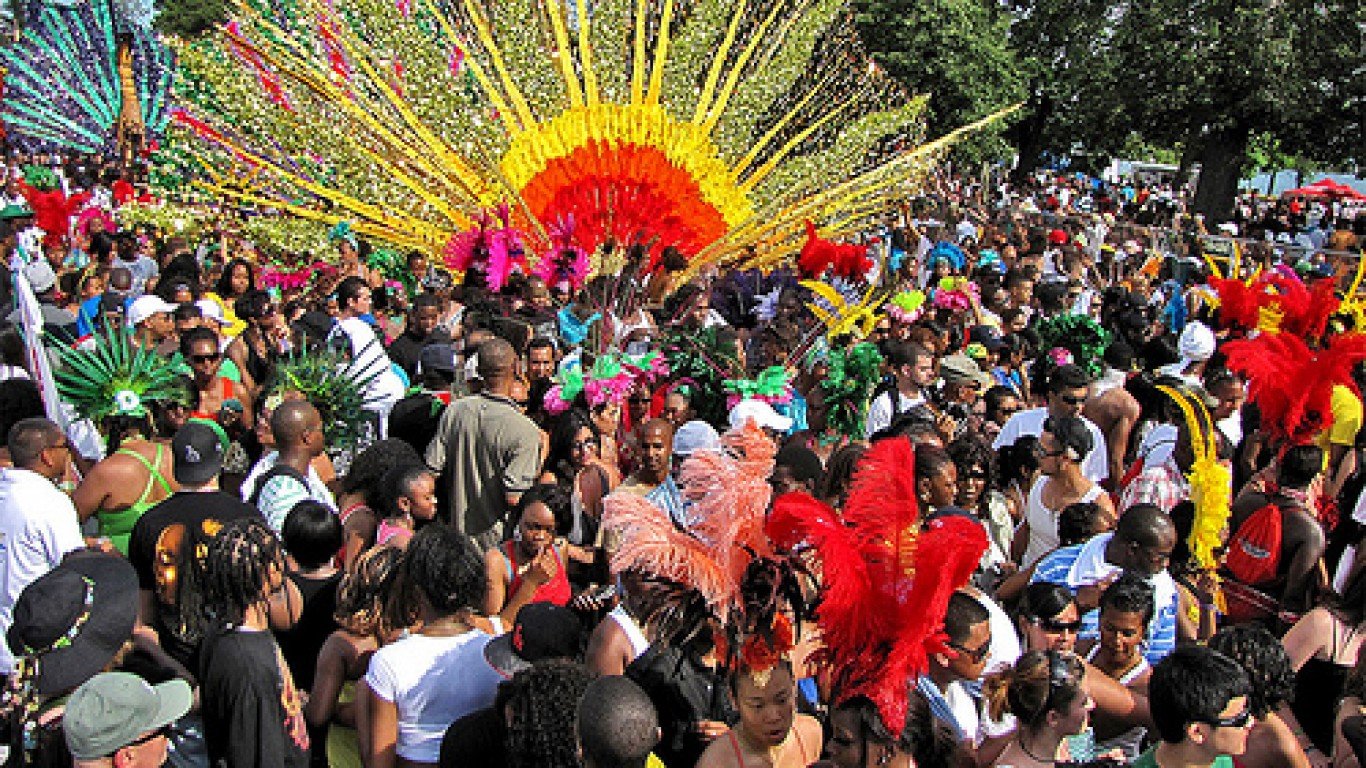
15. Caribana
> Location: Toronto, Canada
> Dates: August 1 – August 4, 2019
The largest Caribbean festival in North America, Caribana sees up to 2 million visitors every year. This celebration of Caribbean culture began in the ’60s as a way to highlight West Indian culture in Canada and fund a West Indian cultural center. The summer festivities feature film, stage acts, ferry cruises and soca, steel drums, and calypso music. The finale is a huge carnival-style parade.
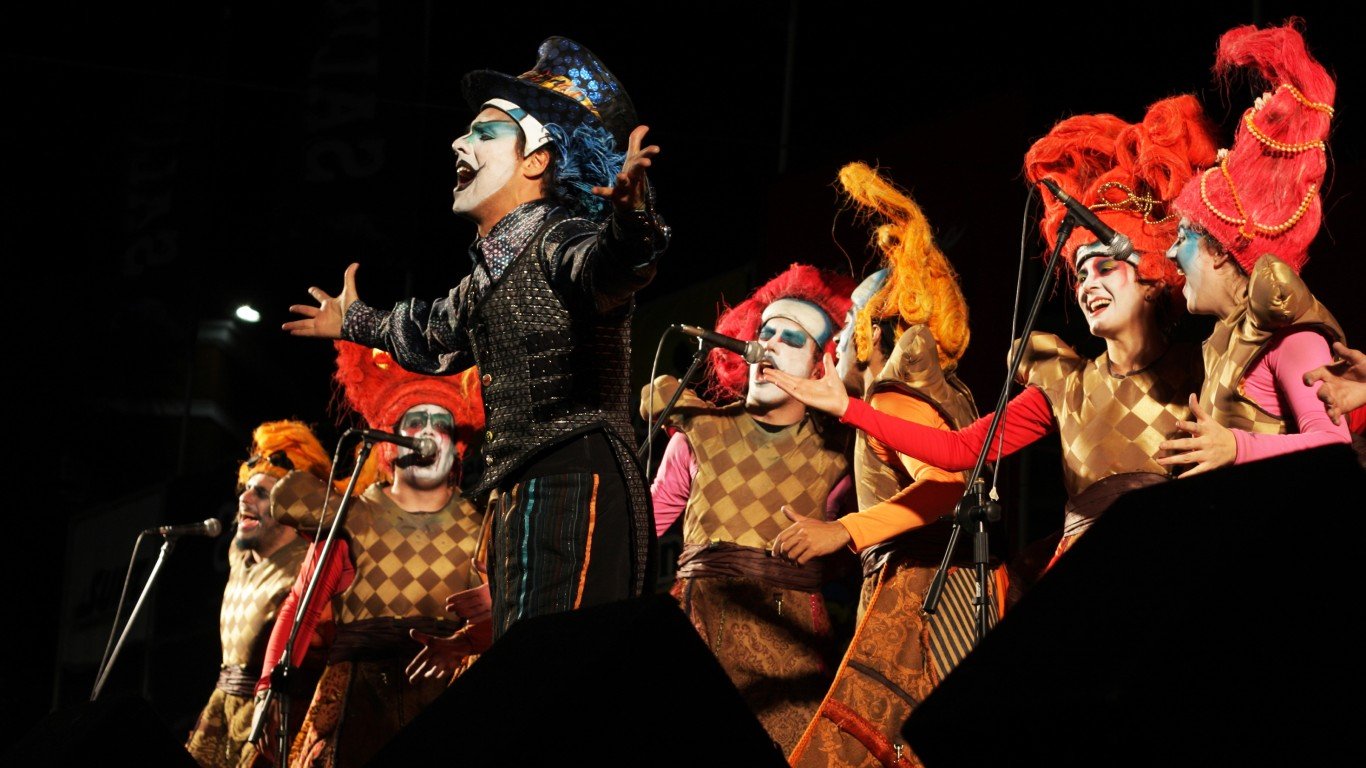
16. Murga Carnival
> Location: Uruguay
> Dates: January 25 – early March, 2019
Known as the longest carnival in the world, Uruguay’s carnival spans 40 days in the capital city of Montevideo. The cultural flavor of this carnival has its roots in Afro-Uruguayan candombe drum music, a tradition dating back to slave celebrations, blended with traditional Uruguayan music and European theatre. The unique highlight of Uruguay’s carnival is the murga, a form of musical theatre used as political and cultural satire. Clubs and theatres all over the city host murga troupes, who put on original 45-minute performances, with the best performers receiving awards.
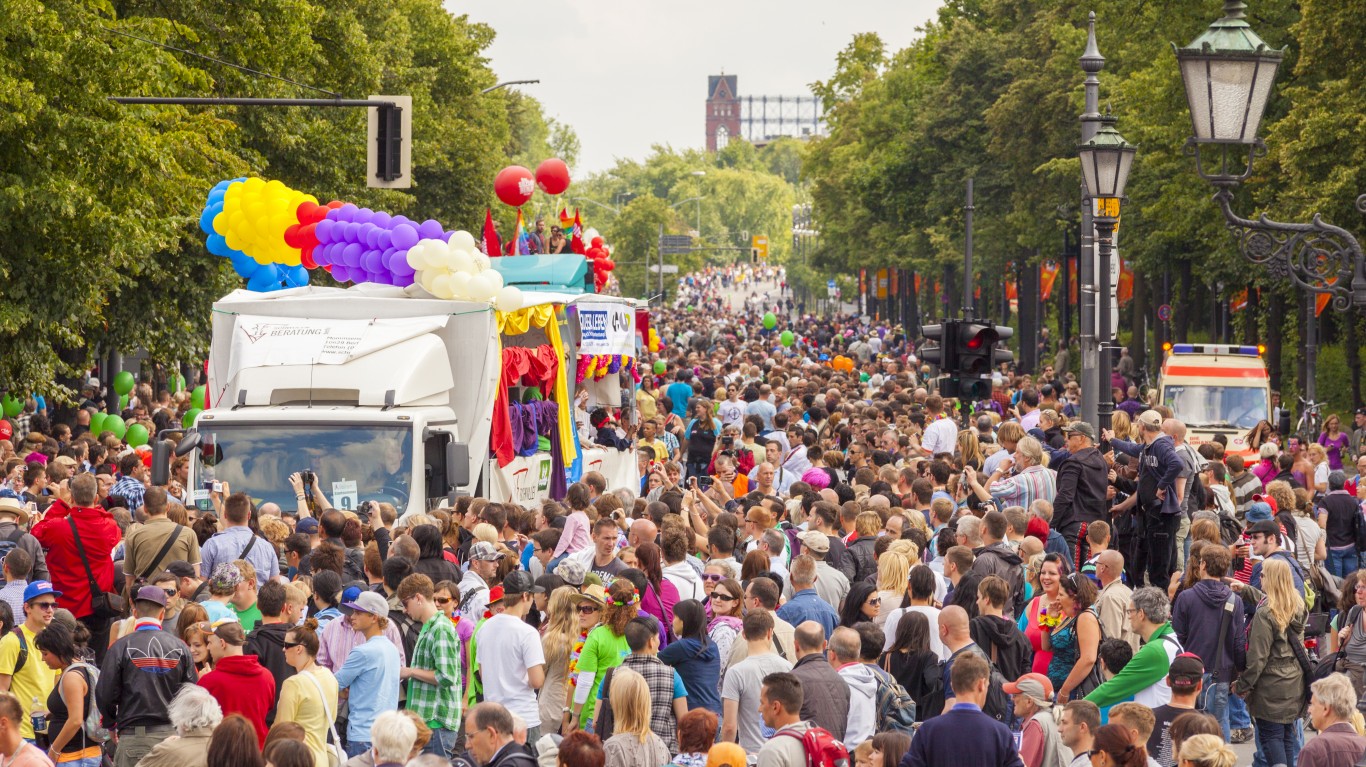
17. Berlin Carnival of Cultures
> Location: Germany
> Dates: June 7 – June 10, 2019
A relatively new festival, Berlin’s Carnival of Cultures was established in 1996 to celebrate the diverse cultures and traditions of the people of Berlin. It features various cuisines and cultural music, dance shows, street performers and hundreds of vendors. The celebrations last four days and culminate in a colorful street parade on Pentecost Sunday where thousands of people perform and half a million line the streets to watch.

18. Oruro Carnival
> Location: Bolivia
> Dates: March 1- 5, 2019
This Bolivian carnival in the mining town of Oruro is attended by 400,000 people each year and has received UNESCO recognition as a Masterpiece of Oral and Intangible Heritage. It features music, crafts, and dozens of groups of folk dancers who perform in extravagant costumes. The main dance that draws visitors from around the world is the Dance of the Devils, or Diablada, which is performed by hundreds of people in devil costumes, lead by Tio Supay, a local deity who emerges from the underworld for the festival.
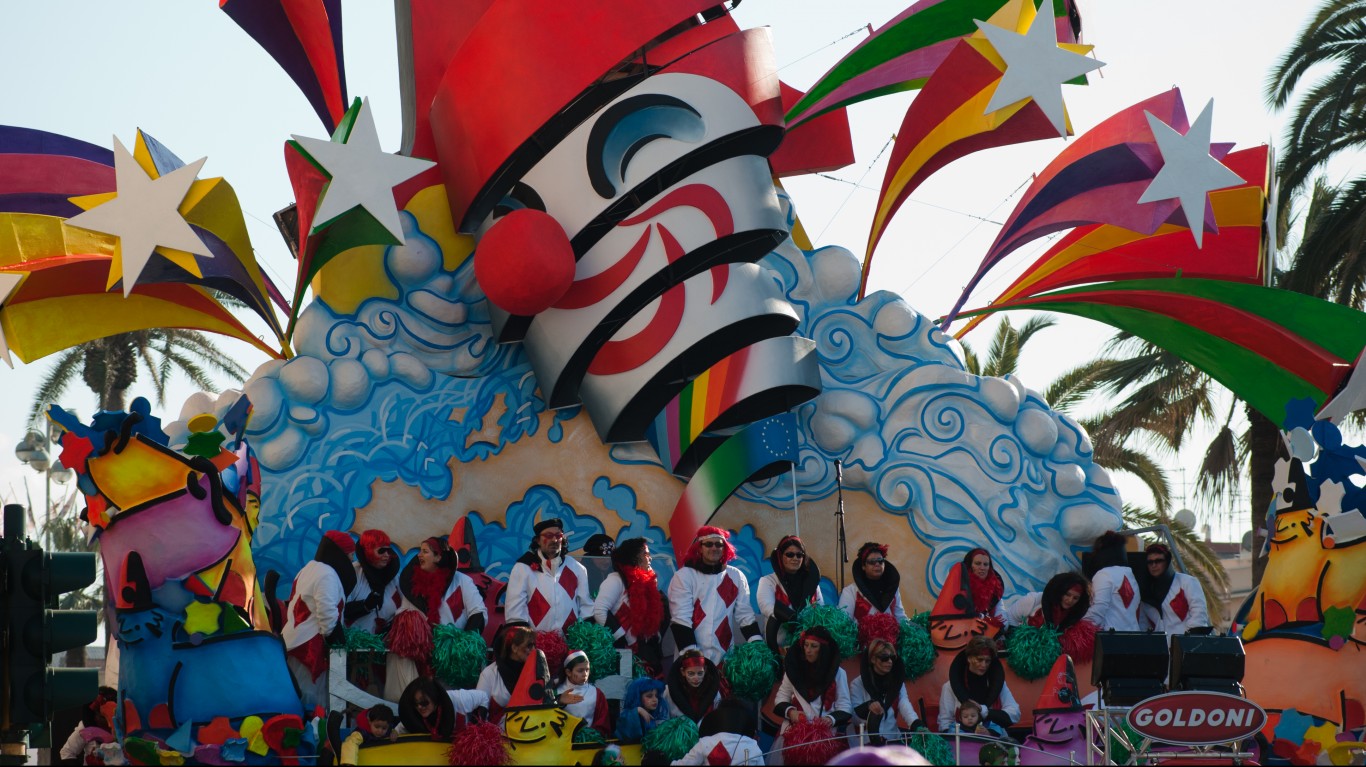
19. Viareggio Carnival
> Location: Italy
> Dates: February 9 – March 5, 2019
For five weekends during Lent, Viareggio is home to the largest folk festival in Italy with 600,000 attendants each year. Since its inception in 1873, the festival has become known for its focus on the satirization of Italian and world issues. Satire comes in the form of the astounding themed floats that are built every year using traditional techniques. They can be up to 60 feet high and take over six months to build.
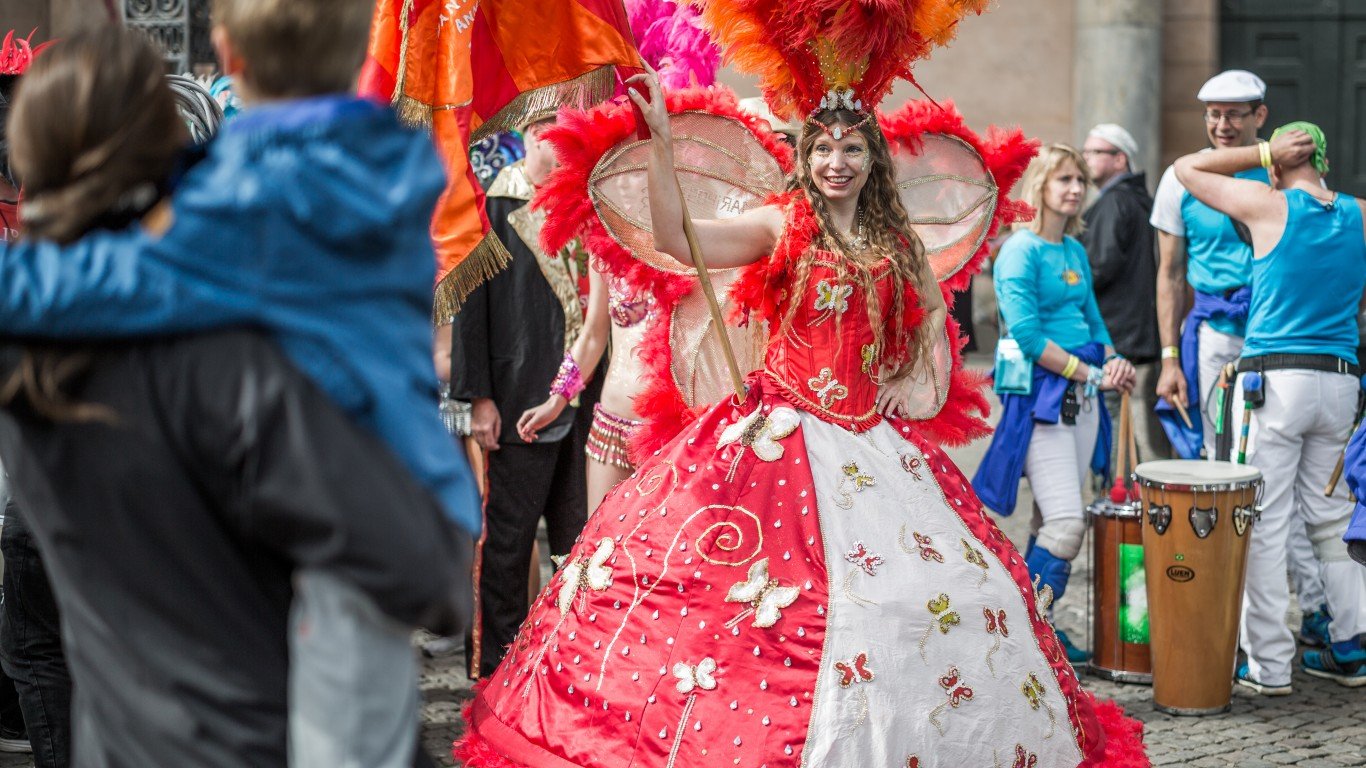
20. Copenhagen Carnival
> Location: Denmark
> Dates: July 6 – July 15, 2019
Each year, up to 200,000 people attend Copenhagen’s carnival, which in the last few years has become the largest Danish festival for world music, with over 100 bands, 2,000 parade dancers, and a musical spread that ranges from samba to electronica. The three-day festival celebrating Pentecost features a spectacular parade through Copenhagen’s Old Town to the Christiansborg Palace, and even a well-attended children’s parade.
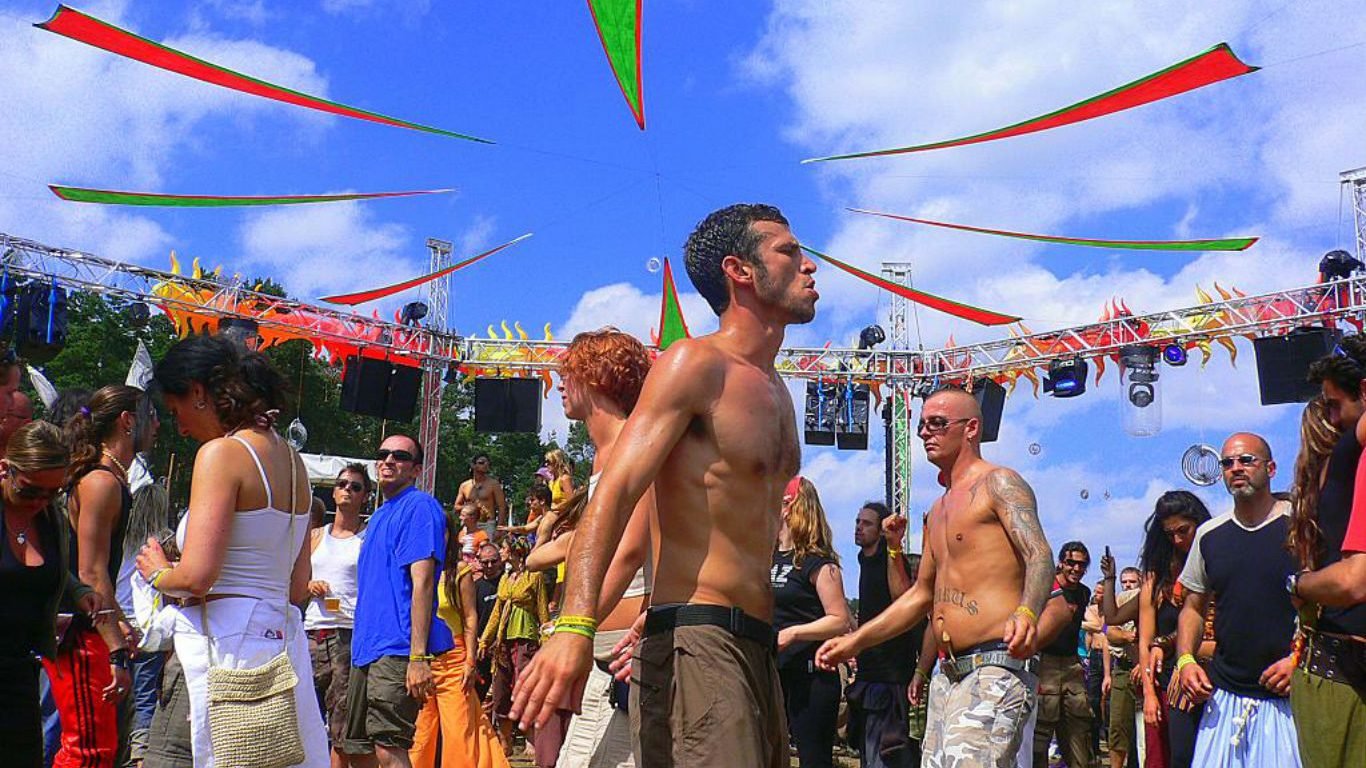
21. Goa Intruz
> Location: India
> Dates: March 2 – 5, 2019
This four-day festival is a blend of Shigmo (a spring Hindu festival) and Christian Lent celebrations, but has come to be celebrated by all Goans regardless of their caste or religion. In an area known for its unique folk music, the festival highlights folk dances and songs performed by members of farming and fishing communities. A recurring character at the celebration is King Momo, who gives everyone permission to eat, drink, and be merry. The festival ends with people throwing handfuls of colored powder onto each other.
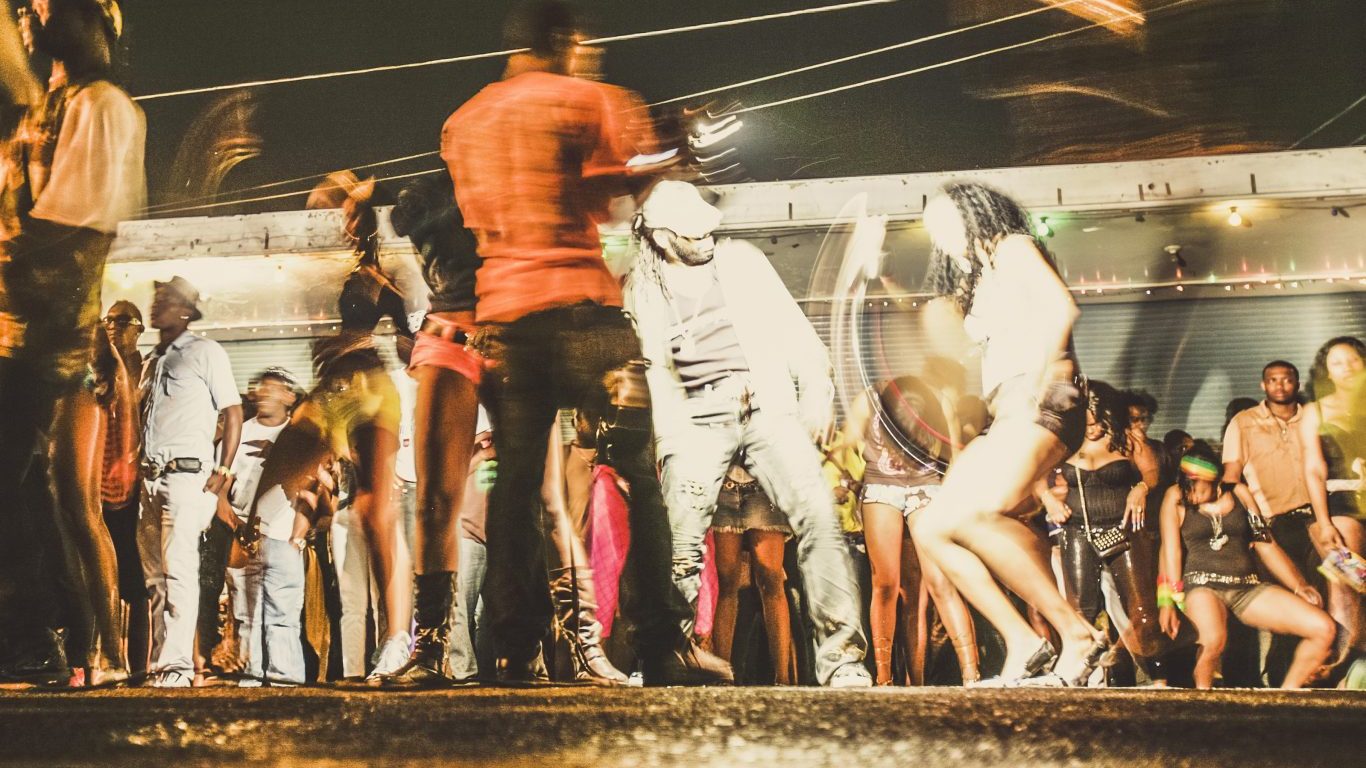
22. Jamaica Bacchanal Carnival
> Location: Jamaica
> Dates: March 8 – April 28, 2019
Spanning eight weeks, Jamaica’s carnival celebration called Bacchanal attracts tens of thousands attendants. Street parades and performances all over the island feature a diverse spread of music from samba to soca to modern dancehall, and of course dancers in elaborately decorated attire. Volunteers and designers spend months putting together the costumes, which have their roots in the African Diaspora, when slaves would wear masks or feather headdresses and paint their faces.
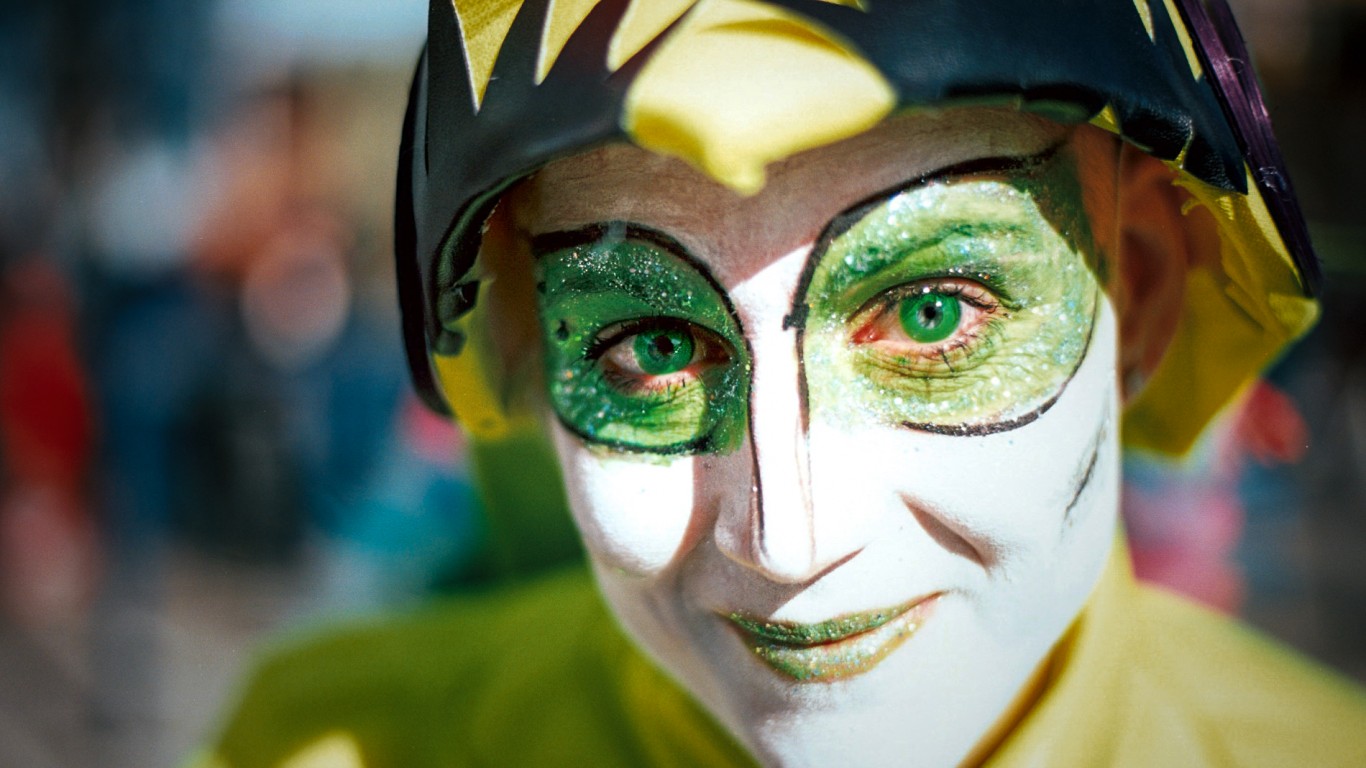
23. Rijeka Carnival
> Location: Croatia
> Dates: January 17 – March 6, 2019
Croatia’s carnival celebration in Rijeka spans over a month, featuring a Queen’s pageant and a children’s parade and the spectacular International Carnival Parade. The largest carnival in Croatia, it attracts up to 100,000 attendants a year and features over 100 bands, colorful costumes, masquerade balls, and zvoncari, men who wear animal skins and dance through the crowd ringing bells to ward off evil spirits.
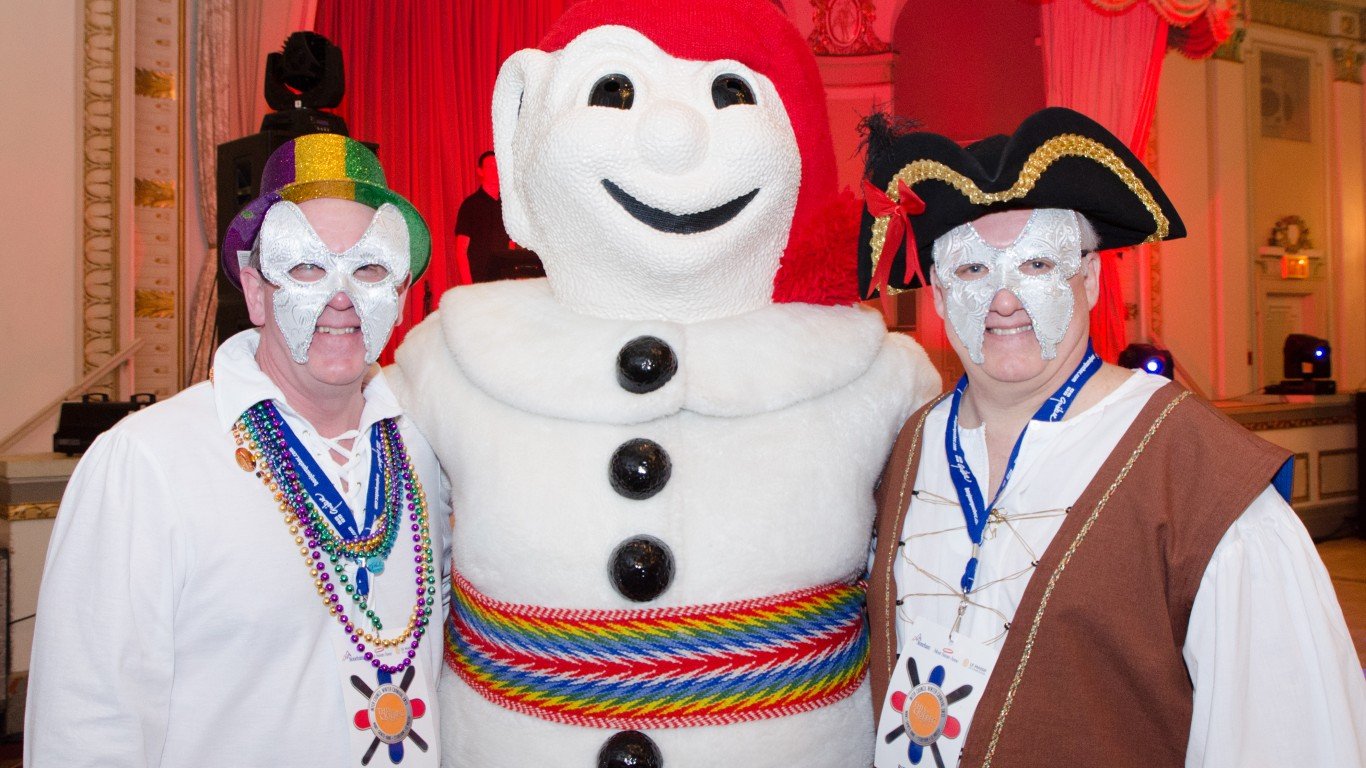
24. Quebec Winter Carnival
> Location: Canada
> Dates: February 8 – 17, 2019
Quebec City’s pre-Lent carnival first happened in 1894 and since then has grown to be one of the biggest winter festivals in the world, with over 1 million attendants in 2006. Winter activities rule the celebration and include dog sled rides, ice slides, an icy canoe race across the Saint Lawrence River, a snow bath, and even an ice palace that houses Bonhomme, the carnival’s snowman mascot. Other very Canadian carnival events are the axe-throwing contest and mechanical moose rides.
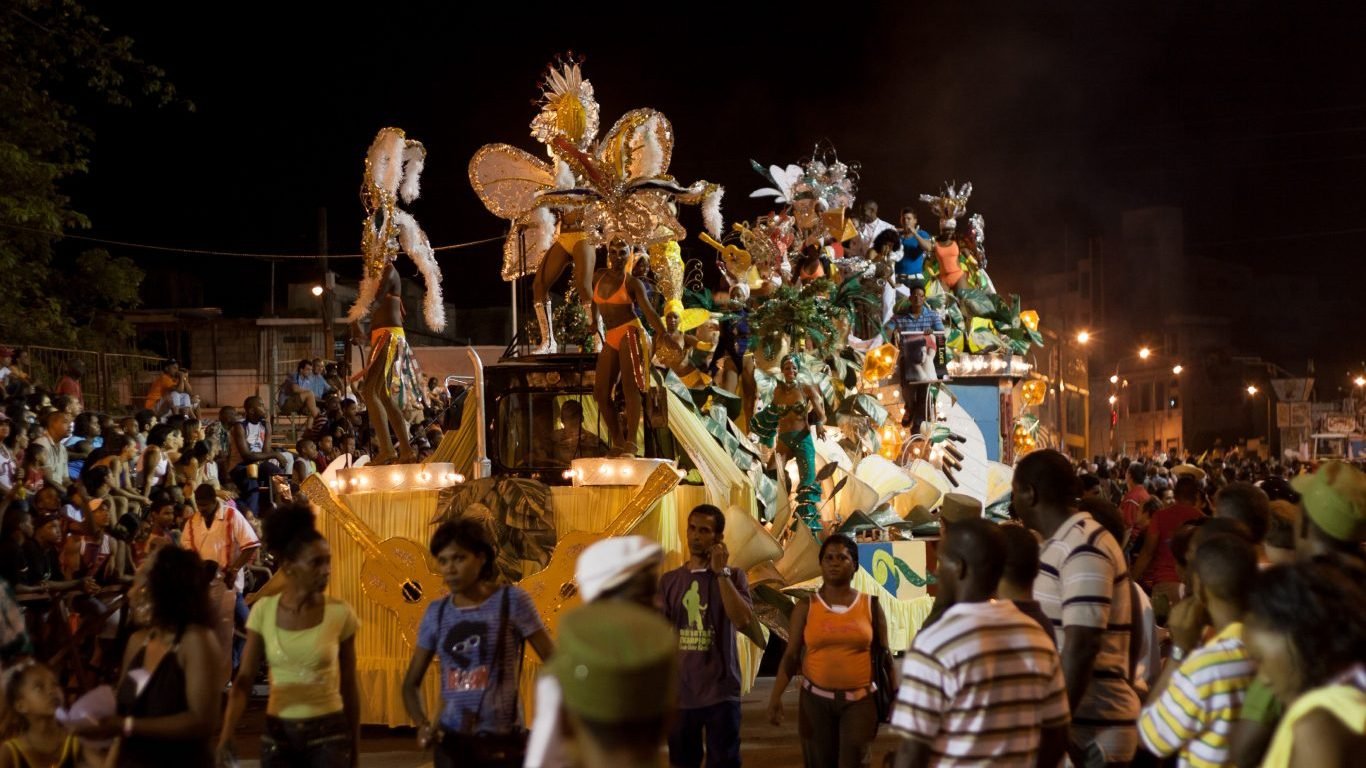
25. Fiesta del Fuego
> Location: Cuba
> Dates: July 3 – July 9, 2019
Santiago, Cuba, hosts this annual Fire Festival which began in 1981 as a way to pay tribute to the diversity of religions and cultures in the Caribbean. Every year a different country is selected and honored at the festival. Involving over two thousand artists from over a dozen countries, this celebration features dance, magic, religious ceremonies, theatre, and music. The finale and most dazzling event of the festival is the Fire Parade on the last evening, which culminates in the burning of a devil effigy to the cascade of drums.
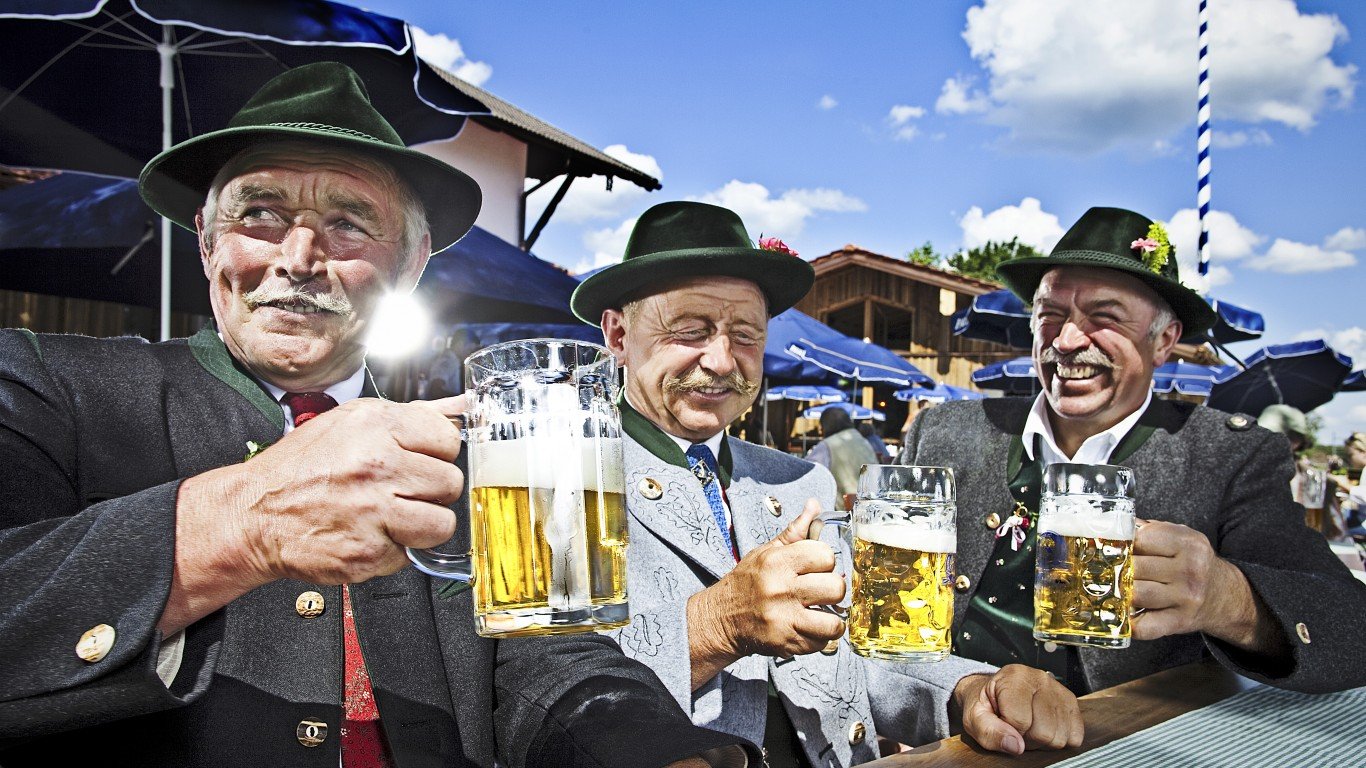
26. Oktoberfest
> Location: Germany
> Dates: September 21 – October 6, 2019
Munich’s Oktoberfest is the largest folk festival in the world, with about 6 million attendants yearly. The largest beer tent holds 10,000 people and tourists are encouraged to download the Oktoberfest App to navigate the fairgrounds and keep track of their entourage. In addition to colorful parades of floats and carriages, the festival features a Riflemen’s Procession, old-style fair rides, Bavarian folk music in every tent, and thousands of sausages, pretzels, and gingerbread.
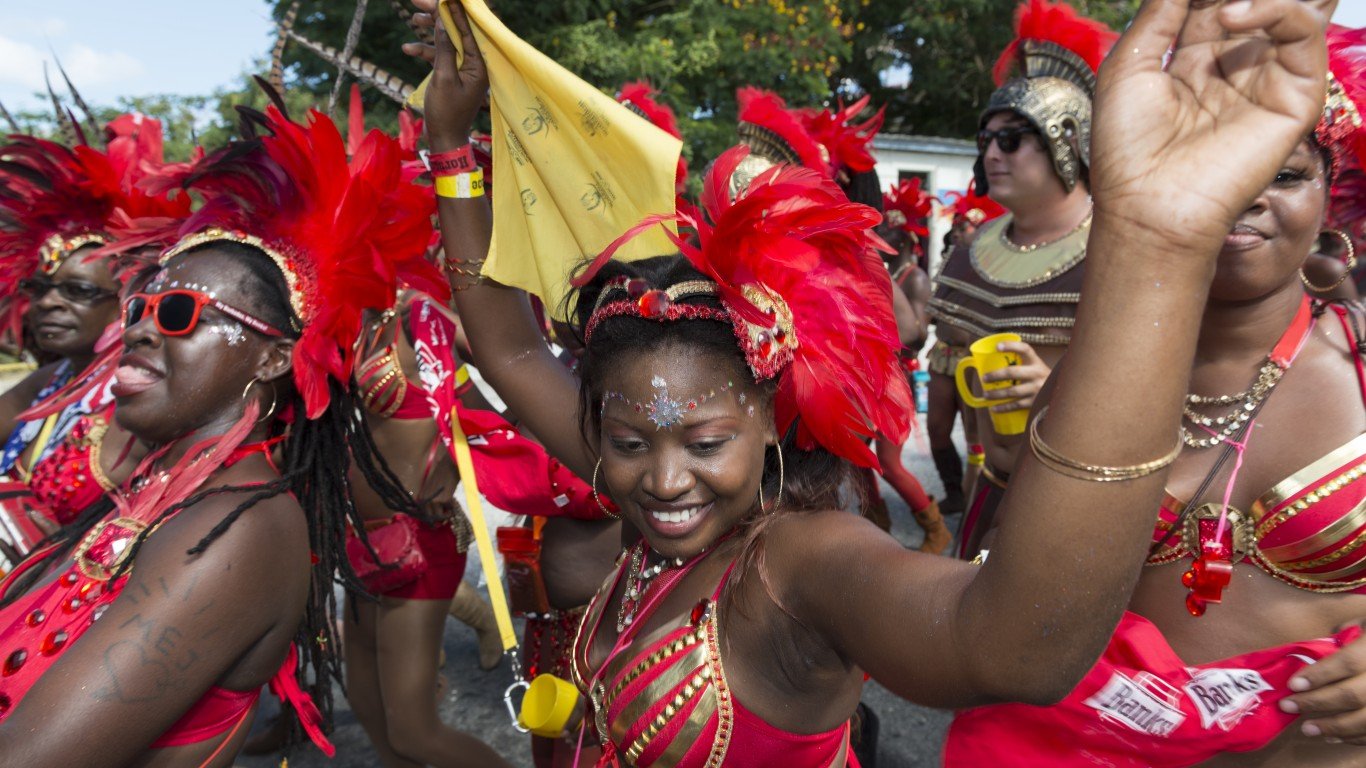
27. Crop Over Festival
> Location: Barbados
> Dates: May 4 – August 5, 2019
Crop Over is festival in Barbados that was traditionally held to celebrate the end of sugar cane season, but since the ’70s has become the largest music and cultural festival on the island. Highlights are the Foreday Morning Jam, where participants paint their bodies and dance until dawn, and Grand Kadooment Day, the final celebration parade of masquerade bands, decked-out dancers, and music trucks.
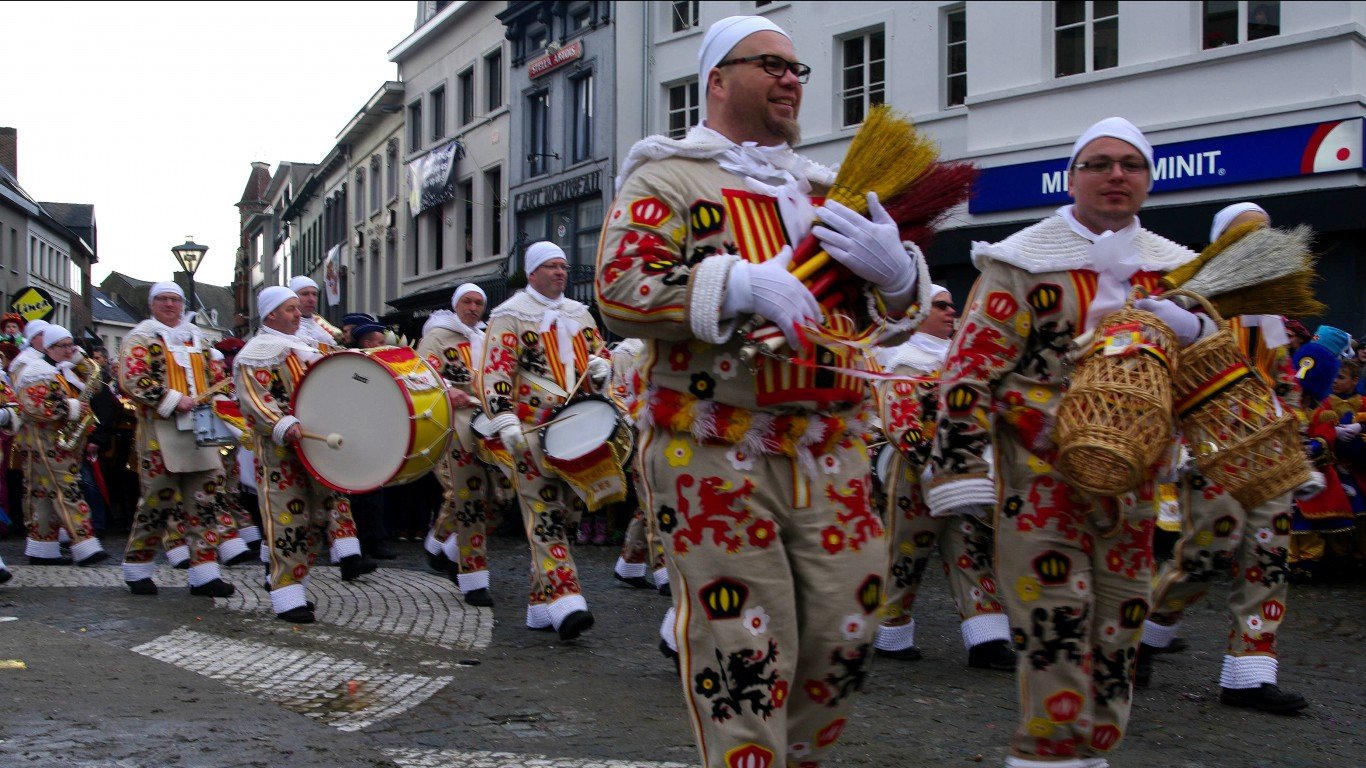
28. Binche Carnival
> Location: Belgium
> Dates: March 3 – 5, 2019
This pre-Lent carnival in Belgium is perhaps the most unique carnival on our list, featuring folkloric traditions including a children’s confetti battle, a ritualistic throwing of oranges, and some very quirky straw-filled costumes. More than a thousand inhabitants of Binche dress up as one of the four traditional festival characters: The Peasants, the Harlequins, the Pierrots and the Gilles. Gilles can only walk with a drum beat, and are the stars of the Shrove Tuesday celebration when they must dance through the town drinking champagne at numerous stops along the way.
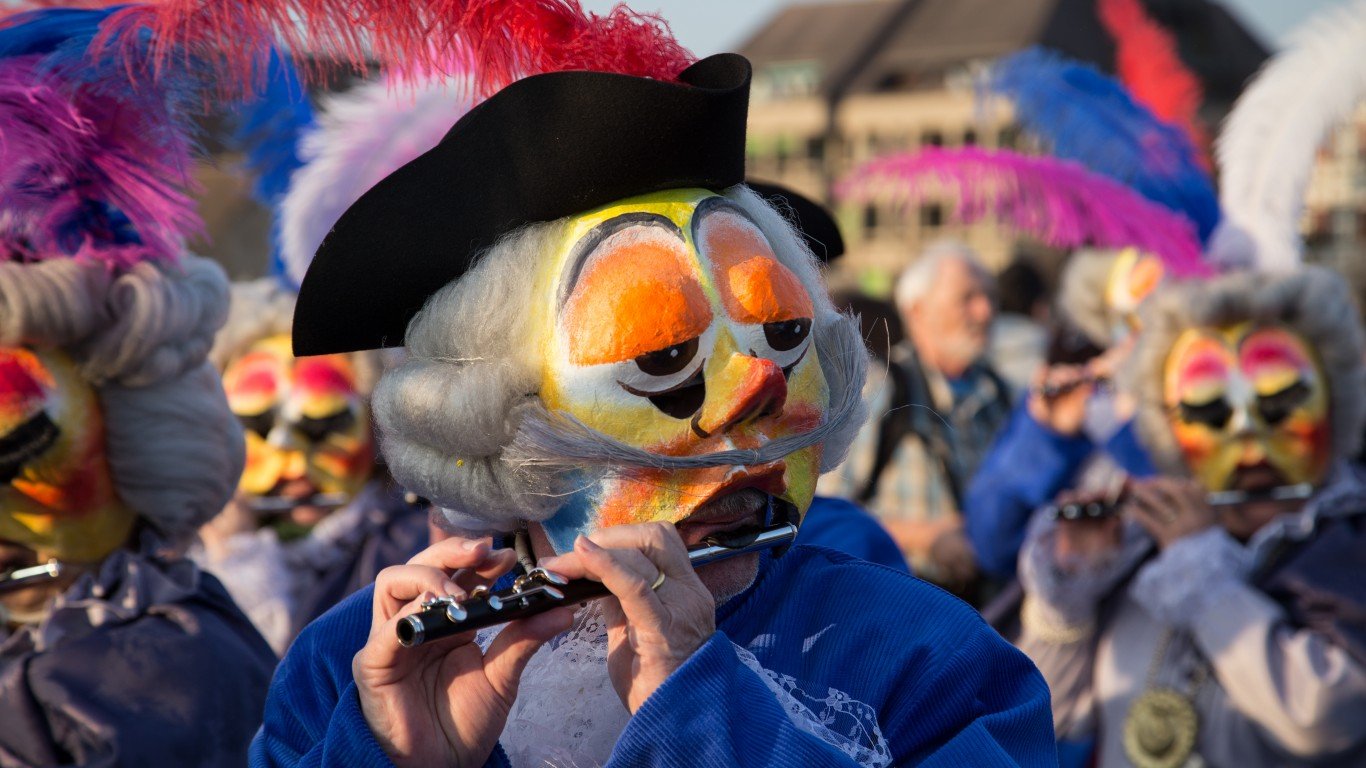
29. Basel Carnival
> Location: Switzerland
> Dates: March 11 – 13, 2019
Basel Carnival is the largest in Switzerland, drawing 200,000 spectators and featuring up to 20,000 local masked and costumed participants in the parade of floats, carriages, and fife and drum bands. The carnival’s spirit is one of satire, where people of all ages and political persuasions participate in parodizing cultural and political blunders.
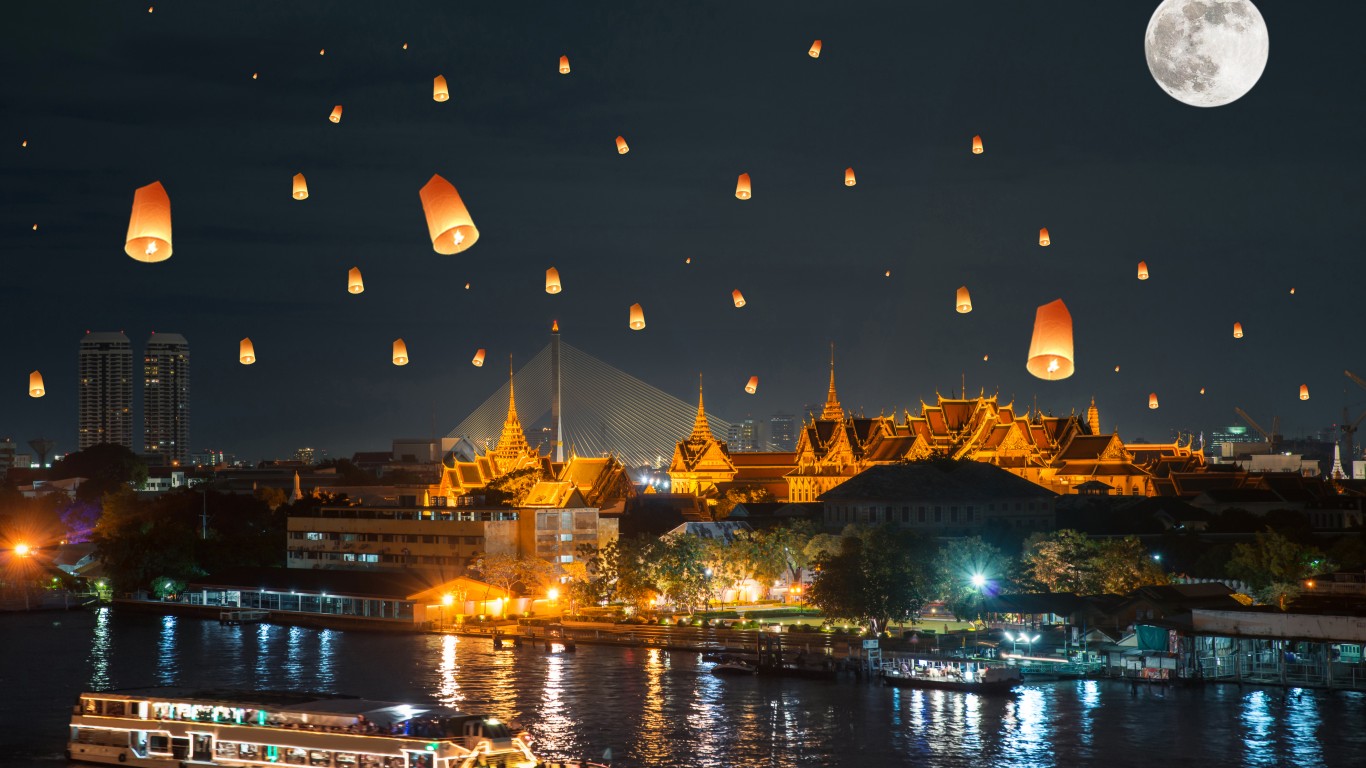
30. Yi Peng Festival
> Location: Thailand
> Dates: November 13, 2019
The Yi Peng (also seen as Yee Ping) Festival in Chiang Mai, Thailand, is usually held in mid-November on the full moon of the last month on the Thai calendar. On this night, thousands of people gather to release candle-lit paper lanterns into the sky and into the Ping River as a symbol of letting go of the previous year and inviting good fortune in the new year.
